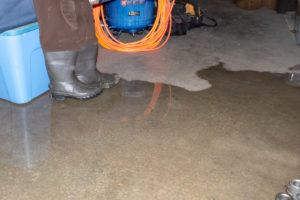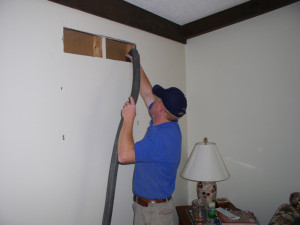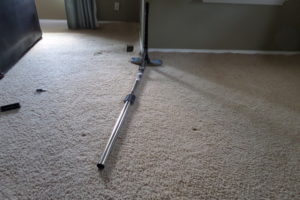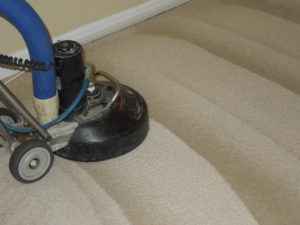
You head down to your basement and find a flood. You didn’t know that last night’s rainfall ended up in your lower level. Whether it’s finished or not, you’ve got a headache on your hands.
It does not take a lot of water to create thousands of dollars of damage. Flooding or water in a basement can lead to a whole host of issues from property damage to dangerous mold. These conditions will need to be addressed with water removal and restoration services. Even if your basement has been dry in the past, that does not mean that problems will not occur in the future. A properly functioning sump pump can help eliminate the worry and headache of a flooded basement.
What Is a Sump Pump and How Does it Work?
A sump pump is a small pump that is typically installed in the lowest part of the basement or crawl space. A sump pump pumps water out of a sump pit and away from your house via a hose to prevent flooding and water damage. Sump pumps are typically installed with a specially constructed sump pit, which is a hole with a gravel base about two feet deep and 18 inches wide. When the ground is saturated from excess rain or flooding, the pit fills with water which triggers the pump to turn on. Once the pump is on, it moves the water out of the pit through pipes that run away from your home and foundation.
Sump pumps turn on automatically through a pressure sensor. When water exerts more pressure on the sensor than air does, the pump is activated. Automatic pumps have an option for you to activate the pump if the pump should fail to work.
How to Maintain a Sump Pump
While sump pumps are very reliable, they are also a very important piece of equipment that need regular maintenance. It is important to do semi-annual checks on your sump pump.
- Since sump pumps are plugged into a power source, it is important to check that your outlet and power cord are in working order. It is also important to make sure that the ground fault circuit interrupter is not tripped due to damp conditions. Periodic checks on the GFCI are necessary.
- Check to make sure that the pump itself is standing upright. The pump vibrates during operation which can cause it to fall over and no longer function.
- Pour a bucket of water into the pit to make sure the pump starts automatically and the water drains quickly once the pump is running. This is a great way to determine if you need to have your pump serviced.
- Consider a backup power source in case of a power outage which can occur during a storm.
What to Do When a Sump Pump Fails
When a sump pump fails, you need to take immediate action. If a heavy rain occurs, water can creep into your basement and you will need to remove it quickly. Even a small amount of water can cause a lot of damage. That’s why the Sams team is ready 24-hours a day in case of an emergency. We offer complete water removal and restoration services to get your home back in order as quickly as possible. We’ll assess the situation, remove debris, secure your belongings, extract the water, bring in heavy duty drying equipment, and apply an anti-microbial disinfectant to remove germs and odor and help prevent the growth of mold and mildew. The Sams team can then make any repairs to your carpet to return it to its pre-loss condition.
We hope these tips will help you keep your sump pump in working condition during our rainy months. But when disaster strikes, know that the Sams team is here for you! Call our 24-hour hotline emergency number at 636-949-8229 and we’ll assist you with your cleanup and restoration needs.







